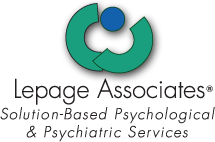Working in the legal profession increases the odds that you are working with a client who is struggling to cope with stress and potentially other mental health concerns. Understanding their barriers to access and how to overcome them can result in improved outcomes.
The legal foundation for mental health availability has made significant gains since the 2008 passage of the Mental Health Parity and Addiction Equity Act (MHPAEA). The act did two important things: it forced large health plans to cover mental health equally with medical benefits and it included substance abuse disorders. The Affordable Care Act (ACA) upped the ante by applying those two factors to the individual insurance market and including them as Essential Health Benefits.
But parity is not access. Several factors still affect the use of mental health services. While equality of coverage is now part of the mandate, defining equivalence of services between mental health and medical/surgical is not easy. There are many behavioral health treatments that don’t have a clear medical equivalent, such as group-based intensive outpatient programs for substance abuse. In addition, health care benefits were traditionally overseen by separate benefits administrators than medical benefits, leading to a fragmented system. Of particular concern is the availability of providers, especially in rural areas. The historical forces of limited coverage and low reimbursement rates for mental health services has concentrated providers in high-population, high-income areas.
So what now? While we have many challenges to overcome, the legal foundation for parity is a good start. It will take time for the benefits to be realized as so many changes to the healthcare and insurance marketplaces are happening at the same time. But evidence is already showing the benefits of integrated care. A 2006 FEHB study concluded that “when coupled with management of care, implementation of parity in insurance benefits for behavioral health care can improve insurance protection without increasing total costs.” Research studies are popping up to show the benefits of integrated care in reducing and preventing physical and mental symptoms, all tied to potential dollars saved as well as improved patient outcomes. As more integration is implemented through the AHRQ’s push for Patient Centered Medical Homes and the Joint Commission’s Behavioral Health Homes, we will see how the benefits pan out.
In the meantime, how do I help my clients? As we mentioned in our November 2012 newsletter, 25% of adults and 20% of children annually have mental health issues that would benefit from talk therapy. As discussed herein, insurance coverage for mental health concerns is available and improving. Talk to your clients about getting help; you are a trusted advisor to them and have the unique opportunity to help. Is stigma of receiving help or getting to the therapist a problem? Some attorneys mention therapy to all clients so the client does not feel singled out. Also, consider referring a therapist who incorporates distance therapy. And encourage your client to advocate for their healthcare integration across disciplines by listing their therapist as an approved person to communicate with their primary care provider and/or medical specialist. As a trusted advisor, you can help normalize their experience and refer valuable mental health resources to facilitate a good outcome for your clients.
